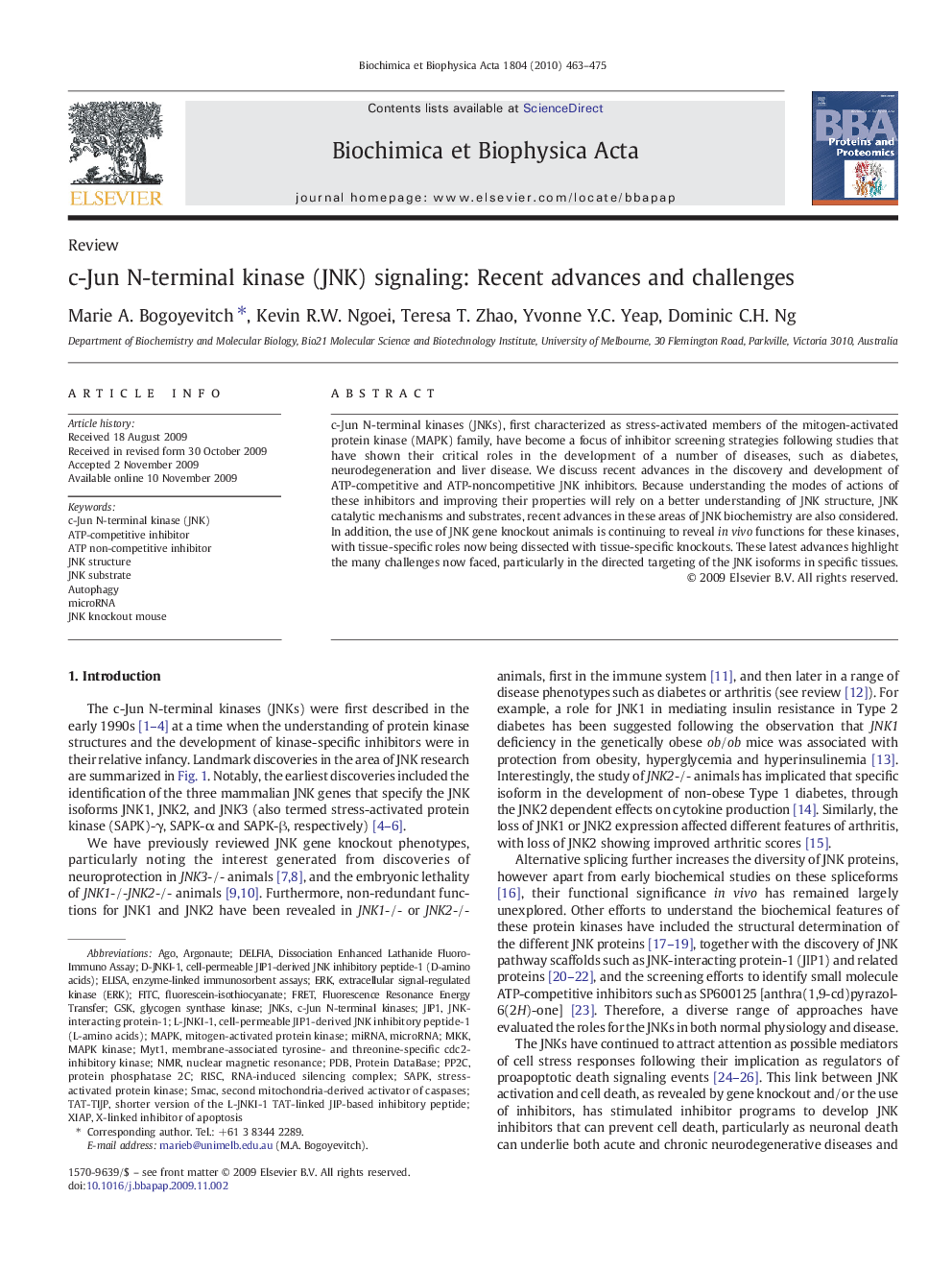| Article ID | Journal | Published Year | Pages | File Type |
|---|---|---|---|---|
| 10537775 | Biochimica et Biophysica Acta (BBA) - Proteins and Proteomics | 2010 | 13 Pages |
Abstract
c-Jun N-terminal kinases (JNKs), first characterized as stress-activated members of the mitogen-activated protein kinase (MAPK) family, have become a focus of inhibitor screening strategies following studies that have shown their critical roles in the development of a number of diseases, such as diabetes, neurodegeneration and liver disease. We discuss recent advances in the discovery and development of ATP-competitive and ATP-noncompetitive JNK inhibitors. Because understanding the modes of actions of these inhibitors and improving their properties will rely on a better understanding of JNK structure, JNK catalytic mechanisms and substrates, recent advances in these areas of JNK biochemistry are also considered. In addition, the use of JNK gene knockout animals is continuing to reveal in vivo functions for these kinases, with tissue-specific roles now being dissected with tissue-specific knockouts. These latest advances highlight the many challenges now faced, particularly in the directed targeting of the JNK isoforms in specific tissues.
Keywords
SMACJIP1GSKD-JNKI-1XIAPSAPKERKPDBPP2CDELFIAFITCJNKsfluorescein-isothiocyanatenuclear magnetic resonancec-Jun N-terminal kinase (JNK)c-Jun N-terminal kinasesMAPKMAPK kinaseMKKArgonauteenzyme-linked immunosorbent assaysAutophagyFluorescence resonance energy transferFRETELISANMRRISCsecond mitochondria-derived activator of caspasesRNA-Induced Silencing ComplexX-linked inhibitor of apoptosisMyt1MicroRNAMiRNAProtein Databaseprotein phosphatase 2Cmitogen-activated protein kinaseStress-activated protein kinaseAGOExtracellular signal-regulated kinase (ERK)glycogen synthase kinase
Related Topics
Physical Sciences and Engineering
Chemistry
Analytical Chemistry
Authors
Marie A. Bogoyevitch, Kevin R.W. Ngoei, Teresa T. Zhao, Yvonne Y.C. Yeap, Dominic C.H. Ng,
